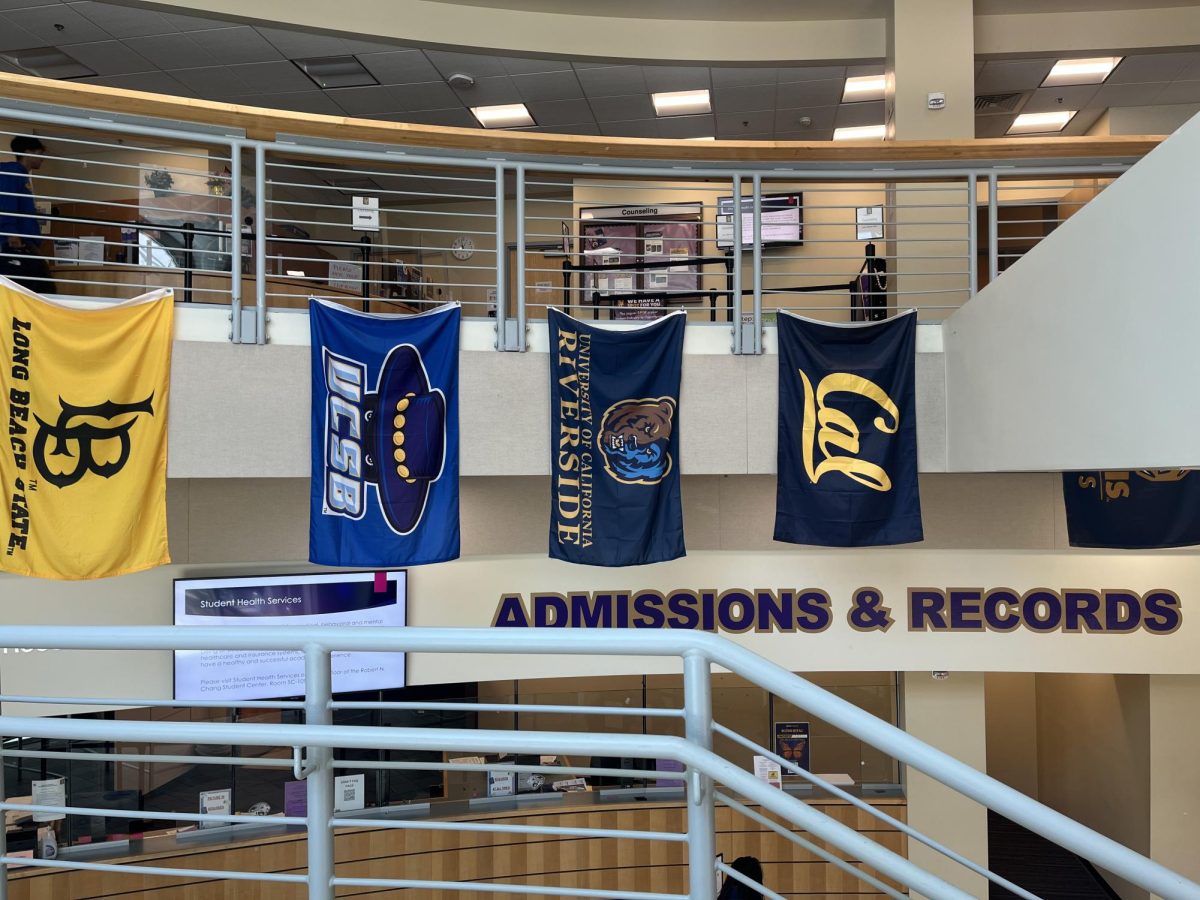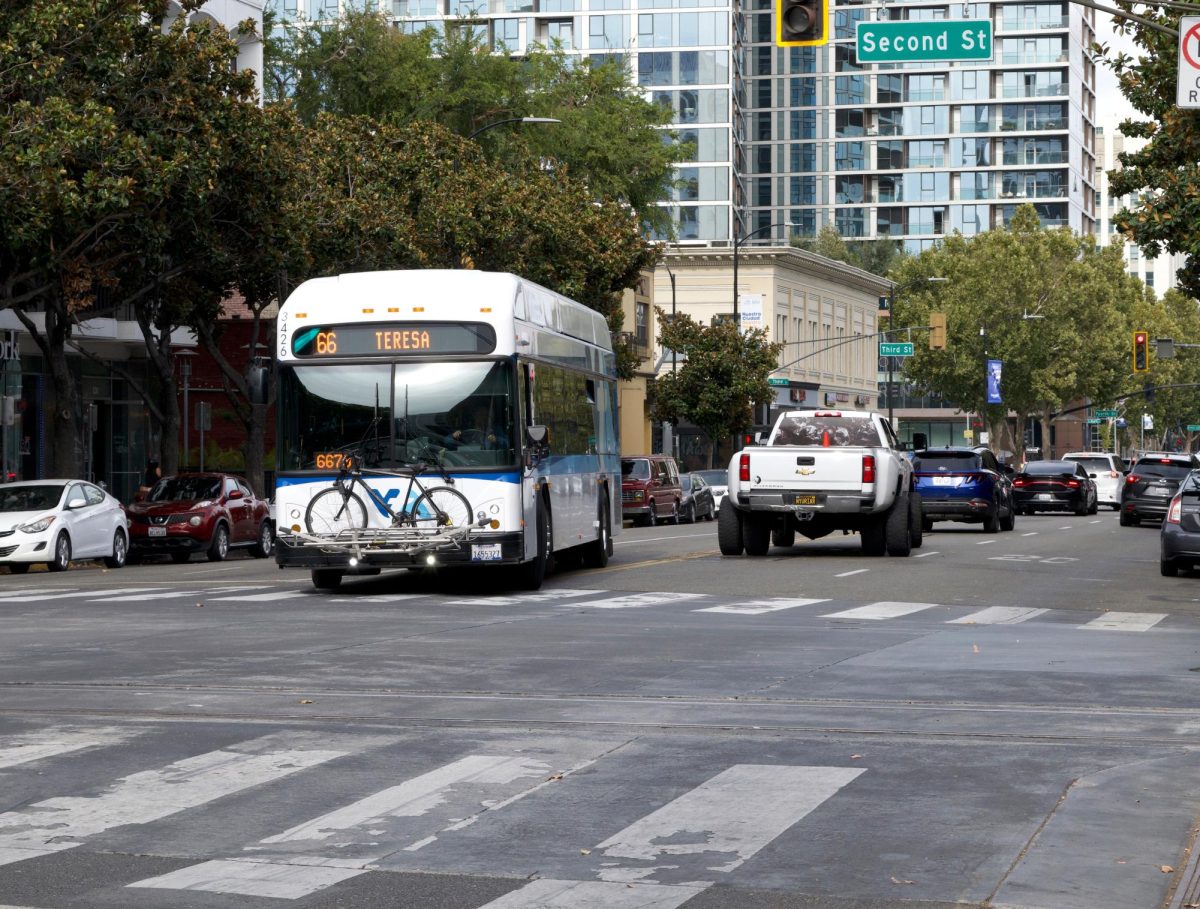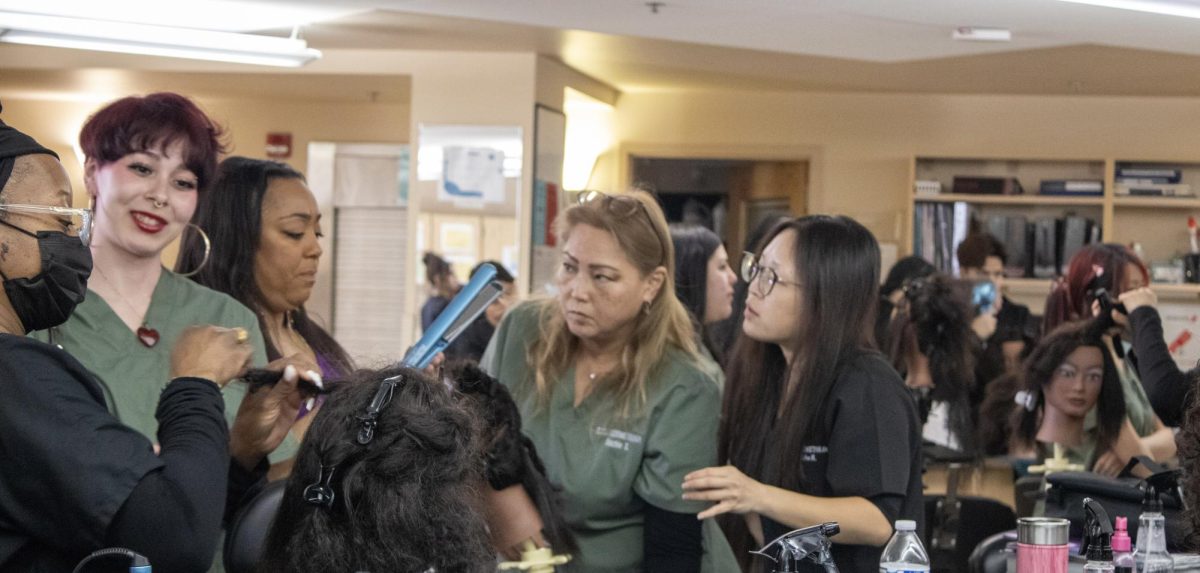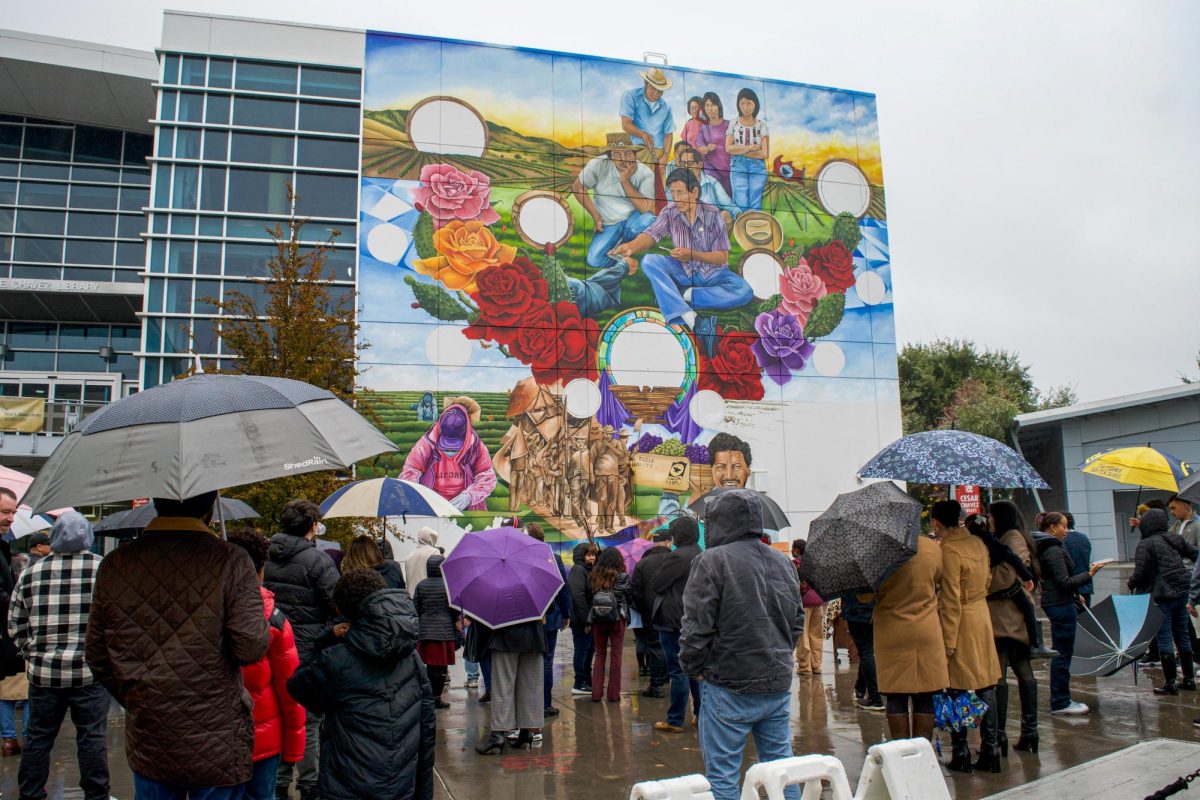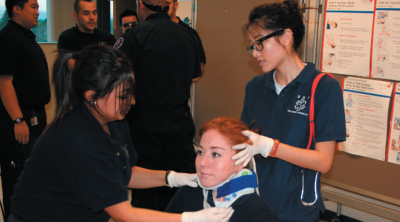 [/media-credit]
[/media-credit]
According to the spring 2012 course catalog, the prerequisite will prepare students to function as an EMT-B in clinical and emergency medical services.
“We are preparing them for a career in the EMS where they should have an easy transition, by us making sure that they maintain the standards of EMS,” Newly appointed EMS Instructor Scott Miller said.
The students are taught anatomy, psychology, procedures dealing with behavioral issues, treating open chest wounds and abdominal respirations said Miller who has been working in the program since 2005.
“We instill that when they come to this program, we are preparing them for a service in the 9-11 system,” Miller said.
“That’s why they wear the uniform and badges everywhere so that they know what to expect when they get into the field.”
Miller said he is working to add to the program, a long-term goal is to bring an advanced EMT program to SJCC’s Health Science department. Miller said his ultimate goal is to apply an associate’s degree in EMS.
“At the beginning of the semester the program has 90-110 students enrolled, at the end of the program 50-55 student’s graduate,” Miller said.
Miller said in this field there are career opportunities as emergency room technicians checking vital signs and administering some of the medications that are taught in the class. An ER tech provides basic treatment of patients. They can also do physical therapy. The biggest career opportunity is working on the ambulance in the 9-11 system.
“Students are being prepared for Inner-Facility Transport. After completion of the program, that’s where most of the students end up going,” Miller said.
The IFT has students working on a Basic Life Support Ambulance. They transport patients from home to ER or from the hospital to a convalescent home.
“On the ride along we are right there, hands-on and involved,” said Bleysyka Torres, 25, nursing major student. “It gives me more practice so I can feel more comfortable doing what I will be doing in the future.”
The IFT is a stepping stone where students get a solid basic life support foundation before they get to advanced EMT, said Miller.
“Even if I don’t go into the field to work as an EMT, I feel that my family is much more protected because I took this course. I feel that I can assist them in any medical emergency, “Torres said.
The program has 10 instructors that assist with the hands-on training and the ride alongs.
“We teach hands on all the skills necessary to be an EMT”, said instructor Manny Gadduang.
During the summer time, students who are transitioning out of the university system to medical schools come to the EMS program to get medical basics, before they go off to medical school, Miller said.
“My goal is to expand the program to fire lining EMT, where students learn fire behavior, how to deal with major fires and treat people in fire lines,” Miller said. “It’s not actual fire fighting it’s working with medics and fire teams on the fire lines.”
By next year Miller said he plans to have the prerequisite, fire lining and a CPR course offered at San Jose City College.
“Most people think that the program is limited to just ambulance work,” Miller said. “The course is a lower level of pre-med; it gives students an idea of where they want to be in the medicine world.”

